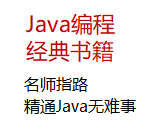|
|
通过Https访问的时候经常会遇到"Not trusted Server Certificate"的问题,有人说在3.0上面没有这个问题,可能已经改进了,在2.2及以前的版本中有这个问题。
开始想的是采用安装证书的方法(Trusting SSL certificates),最后也没有成功,不知道是证书的原因还是其他,有人说安装证书只能在WIFI上使用,没有找到官方文档,用户可能在GPRS上使用,只能放弃。
StackOverflow上也有相关的方案,我整理了一下。
我将注册的步骤封装到DefaultHttpClient子类中了,这样看上去更清晰一些,你也可以
直接实例化DefaultHttpClient的方法。 - SchemeRegistry schemeRegistry = new SchemeRegistry(); schemeRegistry.register( new Scheme ( "https" , sslf, 443 ));
- SingleClientConnManager cm = new
- SingleClientConnManager(post.getParams(), schemeRegistry);
- HttpClient client = new DefaultHttpClient(cm, post.getParams());
- /**
- * @author Brant
- * @decription
- */
- public class SSLHttpClient extends DefaultHttpClient {
- @Override
- protected ClientConnectionManager createClientConnectionManager() {
- SchemeRegistry registry = new SchemeRegistry();
- registry.register( new Scheme( "http" , PlainSocketFactory
- .getSocketFactory(), 80 ));
//443是Https的默认端口,如果网站配置的端口不一样,这里要记着改一下 - registry.register( new Scheme( "https" , new EasySSLSocketFactory(), 443 ));
- return new SingleClientConnManager(getParams(), registry);
- }
- public static SSLHttpClient getInstance() {
- SSLHttpClient client = new SSLHttpClient();
- client.setCookieStore(mCookie);
- return client;
- }
- }
EasySSLSocketFactory: - import java.io.IOException;
- import java.net.InetAddress;
- import java.net.InetSocketAddress;
- import java.net.Socket;
- import java.net.UnknownHostException;
- import javax.net.ssl.SSLContext;
- import javax.net.ssl.SSLSocket;
- import javax.net.ssl.TrustManager;
- import org.apache.http.conn.ConnectTimeoutException;
- import org.apache.http.conn.scheme.LayeredSocketFactory;
- import org.apache.http.conn.scheme.SocketFactory;
- import org.apache.http.params.HttpConnectionParams;
- import org.apache.http.params.HttpParams;
- /**
- * This socket factory will create ssl socket that accepts self signed
- * certificate
- *
- * @author olamy
- * @version $Id: EasySSLSocketFactory.java 765355 2009-04-15 20:59:07Z evenisse
- * $
- * @since 1.2.3
- */
- public class EasySSLSocketFactory implements SocketFactory,
- LayeredSocketFactory {
- private SSLContext sslcontext = null ;
- private static SSLContext createEasySSLContext() throws IOException {
- try {
- SSLContext context = SSLContext.getInstance( "TLS" );
- context.init( null , new TrustManager[] { new EasyX509TrustManager(
- null ) }, null );
- return context;
- } catch (Exception e) {
- throw new IOException(e.getMessage());
- }
- }
- private SSLContext getSSLContext() throws IOException {
- if ( this .sslcontext == null ) {
- this .sslcontext = createEasySSLContext();
- }
- return this .sslcontext;
- }
- /**
- * @see org.apache.http.conn.scheme.SocketFactory#connectSocket(java.net.Socket,
- * java.lang.String, int, java.net.InetAddress, int,
- * org.apache.http.params.HttpParams)
- */
- public Socket connectSocket(Socket sock, String host, int port,
- InetAddress localAddress, int localPort, HttpParams params)
- throws IOException, UnknownHostException, ConnectTimeoutException {
- int connTimeout = HttpConnectionParams.getConnectionTimeout(params);
- int soTimeout = HttpConnectionParams.getSoTimeout(params);
- InetSocketAddress remoteAddress = new InetSocketAddress(host, port);
- SSLSocket sslsock = (SSLSocket) ((sock != null ) ? sock : createSocket());
- if ((localAddress != null ) || (localPort > 0 )) {
- // we need to bind explicitly
- if (localPort < 0 ) {
- localPort = 0 ; // indicates "any"
- }
- InetSocketAddress isa = new InetSocketAddress(localAddress,
- localPort);
- sslsock.bind(isa);
- }
- sslsock.connect(remoteAddress, connTimeout);
- sslsock.setSoTimeout(soTimeout);
- return sslsock;
- }
- /**
- * @see org.apache.http.conn.scheme.SocketFactory#createSocket()
- */
- public Socket createSocket() throws IOException {
- return getSSLContext().getSocketFactory().createSocket();
- }
- /**
- * @see org.apache.http.conn.scheme.SocketFactory#isSecure(java.net.Socket)
- */
- public boolean isSecure(Socket socket) throws IllegalArgumentException {
- return true ;//不判断socket,直接返回true
- }
- /**
- * @see org.apache.http.conn.scheme.LayeredSocketFactory#createSocket(java.net.Socket,
- * java.lang.String, int, boolean)
- */
- public Socket createSocket(Socket socket, String host, int port,
- boolean autoClose) throws IOException, UnknownHostException {
- //return getSSLContext().getSocketFactory().createSocket();
- //will get java.io.IOException: SSL handshake failure: I/O error
- //during system call, Broken pipe
- return getSSLContext().getSocketFactory().createSocket(socket, host,
- port, autoClose);
- }
- // -------------------------------------------------------------------
- // javadoc in org.apache.http.conn.scheme.SocketFactory says :
- // Both Object.equals() and Object.hashCode() must be overridden
- // for the correct operation of some connection managers
- // -------------------------------------------------------------------
- public boolean equals(Object obj) {
- return ((obj != null ) && obj.getClass().equals(
- EasySSLSocketFactory. class ));
- }
- public int hashCode() {
- return EasySSLSocketFactory. class .hashCode();
- }
- }
EasyX509TrustManager: - import java.security.KeyStore;
- import java.security.KeyStoreException;
- import java.security.NoSuchAlgorithmException;
- import java.security.cert.CertificateException;
- import java.security.cert.X509Certificate;
- import javax.net.ssl.TrustManager;
- import javax.net.ssl.TrustManagerFactory;
- import javax.net.ssl.X509TrustManager;
- /**
- * @author olamy
- * @version $Id: EasyX509TrustManager.java 765355 2009-04-15 20:59:07Z evenisse
- * $
- * @since 1.2.3
- */
- public class EasyX509TrustManager implements X509TrustManager {
- private X509TrustManager standardTrustManager = null ;
- /**
- * Constructor for EasyX509TrustManager.
- */
- public EasyX509TrustManager(KeyStore keystore)
- throws NoSuchAlgorithmException, KeyStoreException {
- super ();
- TrustManagerFactory factory = TrustManagerFactory
- .getInstance(TrustManagerFactory.getDefaultAlgorithm());
- factory.init(keystore);
- TrustManager[] trustmanagers = factory.getTrustManagers();
- if (trustmanagers.length == 0 ) {
- throw new NoSuchAlgorithmException( "no trust manager found" );
- }
- this .standardTrustManager = (X509TrustManager) trustmanagers[ 0 ];
- }
- /**
- * @see javax.net.ssl.X509TrustManager#checkClientTrusted(X509Certificate[],
- * String authType)
- */
- public void checkClientTrusted(X509Certificate[] certificates,
- String authType) throws CertificateException {
- standardTrustManager.checkClientTrusted(certificates, authType);
- }
- /**
- * @see javax.net.ssl.X509TrustManager#checkServerTrusted(X509Certificate[],
- * String authType)
- */
- public void checkServerTrusted(X509Certificate[] certificates,
- String authType) throws CertificateException {
- if ((certificates != null ) && (certificates.length == 1 )) {
- certificates[ 0 ].checkValidity();
- } else {
- standardTrustManager.checkServerTrusted(certificates, authType);
- }
- }
- /**
- * @see javax.net.ssl.X509TrustManager#getAcceptedIssuers()
- */
- public X509Certificate[] getAcceptedIssuers() {
- return this .standardTrustManager.getAcceptedIssuers();
- }
- }
然后直接实例化SSLHttpClient就可以想Http一样执行HttpGet和HttpPost方法了,希望能有所帮助:)。
----------------------------
原文链接:https://blog.51cto.com/lbrant/795636
程序猿的技术大观园:www.javathinker.net
[这个贴子最后由 flybird 在 2020-04-08 08:22:28 重新编辑]
|
|


















